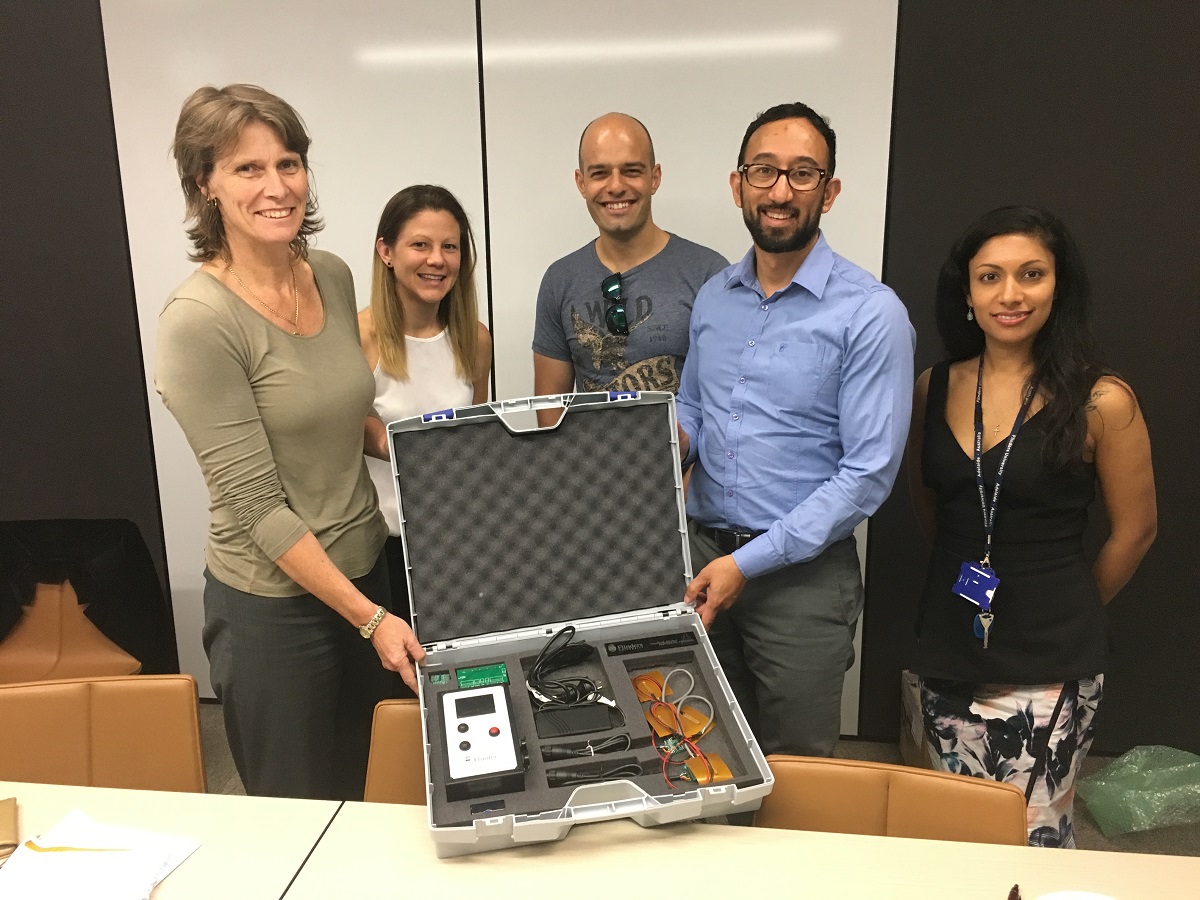
Blood clots, infections, heart attacks and the spiralling financial costs associated with surgery-related hypothermia could be reduced thanks to a leap forward in the technology used to prevent it.
It may not be the most well-known surgical complication, but hypothermia affects more than 30% of patients undergoing major surgery.
It also costs the healthcare sector tens of millions of dollars.
The adverse effects of surgery-related hypothermia prompted Australian surgeon Dr Peter Santa Maria to invent a new device called ‘FloTherm’, which gently heats the soles of the feet and behind the knees to warm blood circulating around the body during surgery.
The device not only reduces the risk of hypothermia, but also gives surgeons better access to other parts of the body, as the feet are far away from the site of most surgeries.
FloTherm was developed at Stanford University with assistance from Flinders University’s Medical Device Partnering Program (MDPP) and in cooperation with two Stanford engineers, Brian Kannard and Abhinav Ramani.
“The current standard of care for warming patients during surgery is fine for surgery on limbs, but when the surgery is on the thorax or abdomen it’s not terribly effective – in fact, these kinds of surgeries have a 50–60% hypothermia rate,” said Dr Santa Maria.
After returning to the University of Western Australia, Dr Santa Maria founded FloTherm Australia.
FloTherm has been shown to be safe and effective in a breast surgery study at Stanford University in the United States, and will undergo further trials before manufacturing begins.
“The MDPP brought electronics expertise to the table that accelerated the development of FloTherm, which in turn has meant that we can get this technology to market much sooner,” said Dr Santa Maria.
Dr Santa Maria is looking to have FloTherm manufactured in South Australia.
“Prior to working with the MDPP, we hadn’t considered manufacturing in Australia, much less in South Australia,” said Dr Santa Maria.
“The MDPP helped make us aware of the opportunities here and connected us to the right people”.
Key Tubing & Electrical, a South Australian manufacturer with a long history of producing heating elements for the car industry, has since offered the perfect manufacturing solution for FloTherm, underscoring the competitiveness and agility of South Australian manufacturing.
Director of the MDPP, Professor Karen Reynolds, said that the FloTherm project represented a true international collaboration.
“FloTherm ticks all of the boxes – it improves patient safety, reduces costs to our health system, and, in a win for the South Australian economy, is slated to be manufactured right here”, said Professor Reynolds.
“We’ve been very pleased to work with Dr Santa Maria on FloTherm.
“Our biomedical engineers have developed a control system for the product to safely operate its heating pads.
“We’re excited to have been able to connect Dr Santa Maria with Key Tubing & Electrical – their assistance on this project is a great demonstration of how agile and competitive our local manufacturers can be.
“By accelerating the development of new medical devices, the MDPP both improves health outcomes and creates new opportunities for South Australia’s manufacturing industry,” said Professor Reynolds.
Background
The Medical Device Partnering Program at Flinders University is funded by the State Government’s Medical Technologies Program. It is an innovative model for collaboration between inventors, researchers, end-users and commercial partners.
It brings medical innovators together with leading biomedical engineers, providing them with 250 hours of research and development assistance, as well as market intelligence. This accelerates the journey from bright idea to commercial availability, moving good ideas out of the laboratory and into hospitals and homes, while also creating opportunities for local manufacturers.
More information can be found on the Medical Device Partnering Program website.

